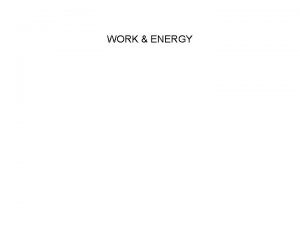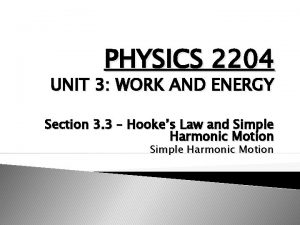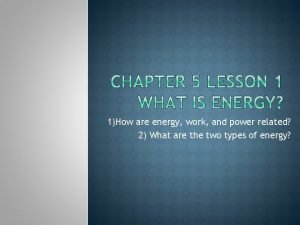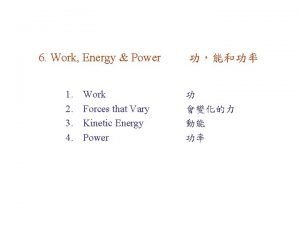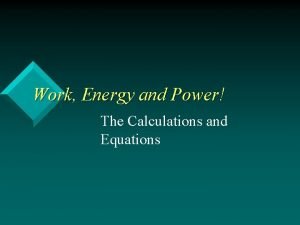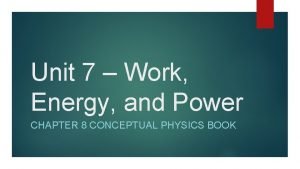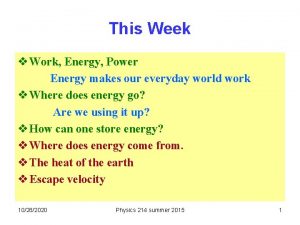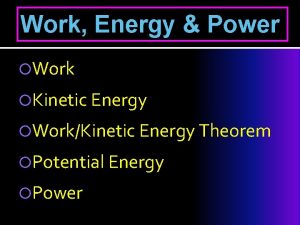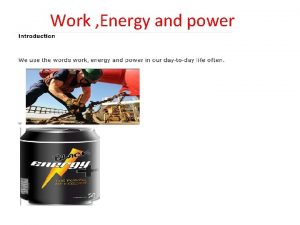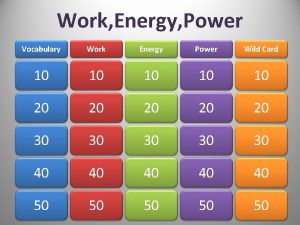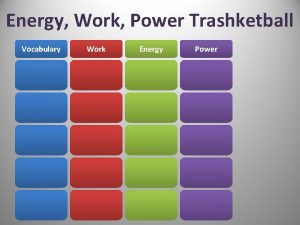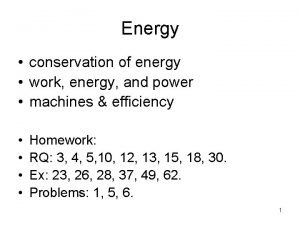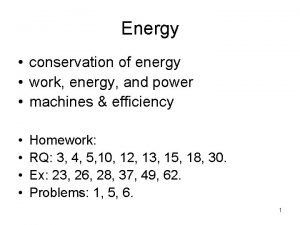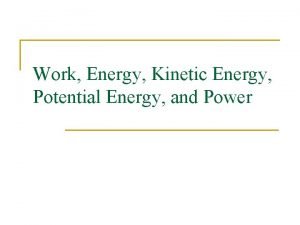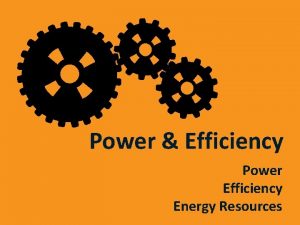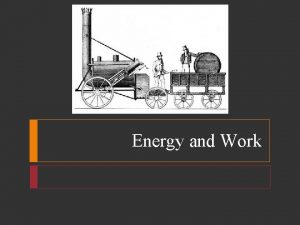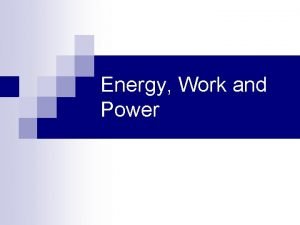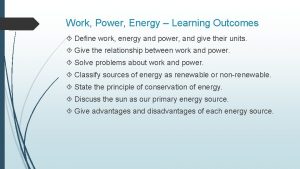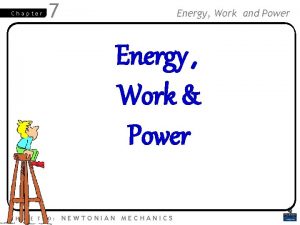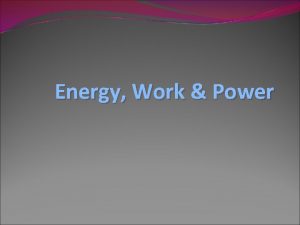Work Power Energy Work 1 In science work





















- Slides: 21

Work, Power & Energy

Work 1. In science work is defined as force times distance. 2. To do work on an object you need an application of a force AND movement due to the force. Example: Lifting a barbell. A force is applied to the barbell and the barbell moves in the direction of the force

Work, Force and Distance W=Fxd 1. Unit of work = Joule (N*m) 2. Work is directly proportional to force. 2 x F = 2 x W 1/2 F = 1/2 W 3. Work is directly proportional to distance. 2 x D = 2 x W 1/2 D = 1/2 W

Check Question 1 Work is done lifting a barbell. How much more work is done lifting a twice as heavy barbell the same distance? * Twice as much work Because if you double force then you double the work

How much work is done lifting a twice as heavy barbell twice as far? * Four times as much work W=F*d In this case both the force and the distance were doubled thereby causing four times as much work to be done.

Power The quantity work has to do with a force causing a displacement. Work has nothing to do with the amount of time that this force acts to cause the displacement. • Power is the rate at which work is done. Power describes how quickly work gets done. 1) The less time it takes for work to be done, the greater the power.

Power Formula P=w/t • Power is measured in Watts (J/s) • Power is directly proportional to work 2 x W = 2 x P 1/2 W = 1/2 P • Power is inversely proportional to time 2 x t = 1/2 P 1/2 t = 2 x P

Check Questions Two physics students, Will N. Andable and Ben Pumpiniron, are in the weightlifting room. Will lifts the 100 -pound barbell over his head 10 times in one minute; Ben lifts the 100 -pound barbell over his head 10 times in 10 seconds. Which did the most work? Which student delivers the most power? Explain. Both did the same amount of work (Fd). Ben did his work more quickly, so he used more power

Check Question 2 Identical twins are late to class. One twin runs up the stair the other twin walks up the stairs. Which twin did more work? * Both twins applied the same force over the same distance. The twins did the same amount of work. Which twin used more power? * Both twins did the same amount of work; however, the twin that ran did the work more quickly and therefore used more power.

Mechanical Energy • Mechanical energy is the energy which is possessed by an object due to its motion or its stored energy of position. Mechanical energy can be either kinetic energy (energy of motion) or potential energy (stored energy of position). • An object which possesses mechanical energy is able to do work.

Potential Energy • Defined as stored energy due to position.

Gravitational Potential Energy 1) energy stored in an object due to its height. 2) depends on three things: 1. the objects mass 2. the objects height 3. the force of gravity

Formula for Gravitational PE PE = mass * gravity * height PE = mgh The unit for PE = Joule PE is directly proportional to mass, gravity, and height a) more mass = more PE b) higher = more PE

Work and PE • The amount of PE an object has is equal to the work done to raise the object a vertical distance. • The same amount of work was done in the illustration below because all the balls are at the same vertical height. All the balls have the same PE

Check Questions 1) Does a car hoisted for lubrication in a service station have PE? Yes 2) How much work will raise the car twice as high? a) three times more work b) twice as much work c) the same amount of work 3) If the car is raised three times as high, how much PE will it have? Three times as much

Kinetic Energy • Defined as energy in motion • Depends on the mass and the speed of the object KE =1/2 * mass * velocity squared KE = 2 1/2 mv • The unit for KE = Joule

KE, Mass & Velocity • KE is directly proportional to mass • KE is directly proportional to velocity squared 2 x v = 4 x KE 3 x v = 9 x KE 4 x v = 16 x KE

KE and Stopping Distance KE is equal to the amount of work required to increase the speed of a moving object or the work the object can do while being brought to rest. Consider a car that doubles it speed. This means that KE will quadruple. If KE quadrupled then the work done quadrupled also. So an object moving twice as fast takes four times as much work to stop. If this car were to skid, it would travel four times as far.

Work, PE and KE

Law of Conservation of Energy States that energy cannot be created or destroyed but can change forms

Law of Conservation of Energy Pendulum: At the highest points the pendulum has all PE at the lowest points the pendulum has mostly KE and very little PE.
 The real lesson 21
The real lesson 21 Science is my favorite subject because
Science is my favorite subject because Energy energy transfer and general energy analysis
Energy energy transfer and general energy analysis Energy energy transfer and general energy analysis
Energy energy transfer and general energy analysis Regents physics work power energy
Regents physics work power energy Work, power and energy activities
Work, power and energy activities Joule units
Joule units Physics 2204 unit 3: work, power, energy
Physics 2204 unit 3: work, power, energy Define energy work and power
Define energy work and power How are work and power related
How are work and power related Work power energy and machines
Work power energy and machines Definition of work power and energy
Definition of work power and energy Work power and energy
Work power and energy Work energy power equations
Work energy power equations Jenis usaha apa
Jenis usaha apa Work and energy physics
Work and energy physics Work and energy section 2 describing energy
Work and energy section 2 describing energy Work energy theorem
Work energy theorem Chapter 4 section 1 work and machines answer key
Chapter 4 section 1 work and machines answer key Solar power satellites and microwave power transmission
Solar power satellites and microwave power transmission Actual power
Actual power Flex power power supply
Flex power power supply





